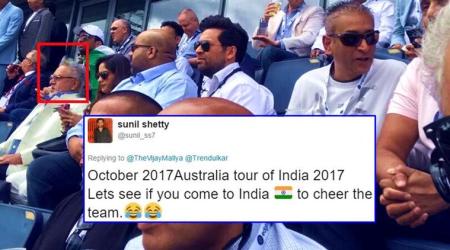 Scenes from The Second Bakery Attack (Source: Pratyoosh Kashyap)
Scenes from The Second Bakery Attack (Source: Pratyoosh Kashyap)
When leaving the Instituto Cervantes, Delhi, after the premiere performance of Murakami Monologues last week, there is a sense of rediscovery — of having been challenged to look at familiar characters from the pages of The Elephant Vanishes come alive on stage in ways that sometimes don’t work, but are consistently engaging.
Haruki Murakami’s works are not the most obvious choice when staging a play. The surreal, absurd and often bizarre experiences his characters go through are offset by a detached, somewhat clinical mode of narration. For Delhi-based The Play Factory, a new theatre group comprising director Mohit Mukherjee and actors Varoon Anand, Devika Rajpal and Pranjal Vaid, the challenge was to put the spotlight on the characters themselves. “We formed the group in January this year, and this is our first production. We just want to create plays that challenge us as performers,” said Mukherjee, the founder. They plan to stage their next production in August.
“We had to bring Murakami’s brand of surrealism alive on stage without extravagant sets or technological wizardry. With each short story we chose — On Seeing the 100% Perfect Girl One Beautiful April Morning, Sleep and The Second Bakery Attack — I had an actor who could deliver the monologue. I gave them some devices to work with, played with the structure and ask them to improvise,” says Mukherjee.
 Scenes from 100% Perfect Girl (Source: Pratyoosh Kashyap)
Scenes from 100% Perfect Girl (Source: Pratyoosh Kashyap)
In 100% Perfect Girl…, the performance depended largely on controlling the tempo of the monologue. This included a notable five-minute-long, rapid-fire delivery of lines by Anand. His delivery drew all eyes to the stage, but his stage movements were unsettling. “All of the narration in that story was in the character’s mind. I focused on finding a rhythm that would create beats in the story, pauses that allowed realisation to occur for the character,” said Anand.
The linearity of the first monologue was neatly broken by the second, Sleep, a far more fragmented telling of a Japanese woman who breaks the monotony of her daily life when she discovers that she no longer requires sleep. Rajpal’s take on this story was the most physically performative piece in Monologues, having to bring to life a state of “no sleep, but not insomnia either”, and the visceral transformations that accompany it. “Even as she becomes more aware of her daily routine, she’s still going through the mechanics of it. We wanted to bring out not just what the character said she was feeling, but what she must have actually been going through. When we restructured the story, we also tried to retain the open-endedness that Murakami is fond of, without ending the play too abruptly,” said Rajpal. The performance oscillated between powerful moments that captured the essence of the duality in Sleep, and moments where the thread seemed to be lost — especially for those in the audience unfamiliar with the prose.
The Second Bakery Attack, the third and final adaptation, was also the most localised, blending Vaid’s knack for delivery with liberal sprinklings of Hindi to convey the absurdist humour in the story. As with Sleep, it struggled to get the open-endedness right towards the end, teetering on the verge of abrupt. It was, however, a great way to conclude the production, leaving behind chuckles, a few furrowed brows and a sudden urge to rob the local McDonalds.

